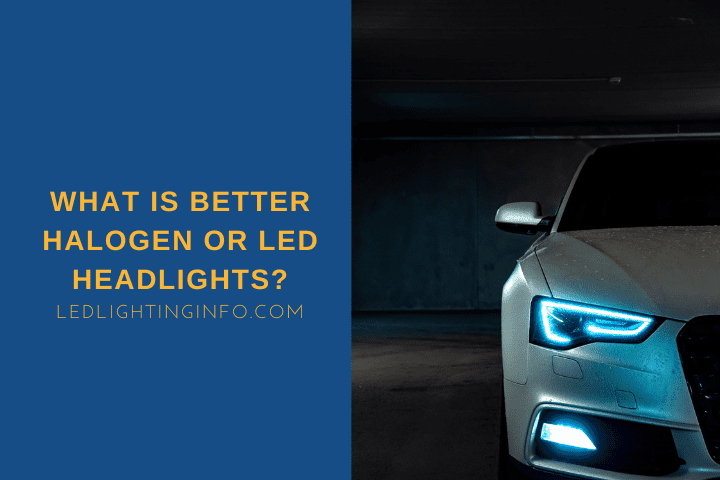While many cars are still using older halogen headlights, most vehicle manufacturers are moving onto the more contemporary options, including Xenon/HID and LED, especially in their premium ranges.
But are LED headlights really better than halogen ones?
And are there any drawbacks to opting for LED headlights?
Generally, LED headlights are better than halogen options because they’re much more energy-efficient, significantly longer-lasting, and better illuminate the road. Drawbacks of LEDs include vulnerability to snow, the potential to dazzle drivers, and their cost.
There’s a fair bit to cover, so let’s use this guide to look at:
- The differences between halogen and LED headlights
- Whether LED headlights are brighter than halogen
- Whether you can swap LED headlights into halogen housing
Differences Between Halogen And LED Headlights
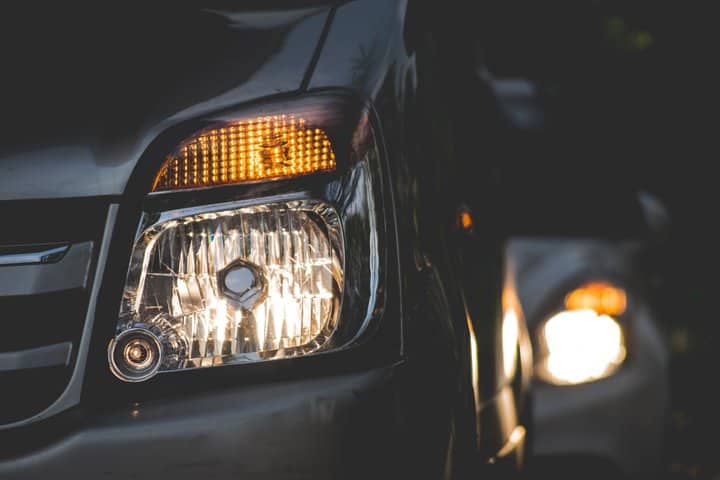
Halogen headlight bulbs have been used for many years, but they’re starting to show their age.
LED bulbs are now beginning to gain a foothold in the market, thanks to their many advantages.
But it’s not completely straightforward.
Let’s compare halogen and LED headlight bulbs so that you can understand the difference:
Energy Consumption
While the specifics vary between each bulb, an LED bulb will always be significantly more energy-efficient than a halogen equivalent.
An LED bulb as bright as an equivalent halogen one will use around 80-85% less energy.
That doesn’t necessarily mean that you’ll be draining your battery less. It depends on whether your car circuit supports LED headlights.
If it does, then great – you won’t need to rely on the battery as much, which in a gas-powered car means the battery will last (slightly) longer since the headlights use so little energy.
But if your car’s headlight housing doesn’t support LEDs, you’ll need to add a resistor.
This means that they still draw the same power from the battery but only direct the right amount of voltage to the LED bulb.
So they’ll still drain the battery just as much as normal halogen bulbs would.
Lifespan
LED bulbs work through due to current passing through a semiconductor, while halogen bulbs heat up a tungsten filament.
That filament will wear out a lot faster than a semiconductor will – expect a halogen headlight to last for up to 2,500 hours or so on average, and an LED headlight for somewhere between 30,000 and 50,000 hours.
Color Temperature
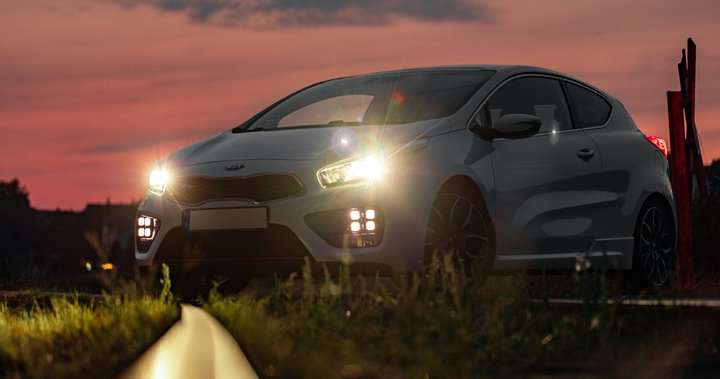
Most halogen headlights are slightly yellow-orange, with a color temperature of around 3,000 – 4,000 Kelvin.
Generally, LED headlights will have a color closer to pure white, around the 5,500 to 6,000 Kelvin mark.
Actual Temperature
LED headlights work best in the cold, and they don’t generate a massive amount of excess heat when they’re powered on.
Halogen headlights waste a lot of their electricity, creating heat and light (hence the higher energy consumption), so they get warm.
This is actually a benefit of halogen headlights if you’re driving in snowy weather.
Halogen headlights will melt any snow that hits the headlights, but LED ones won’t.
In heavier snowfall, your LED headlights could be coated with snow, reducing visibility if it’s thick enough.
And then of course there’s the brightness of the bulbs – let’s compare that.
Are LED Headlights Brighter Than Halogen?
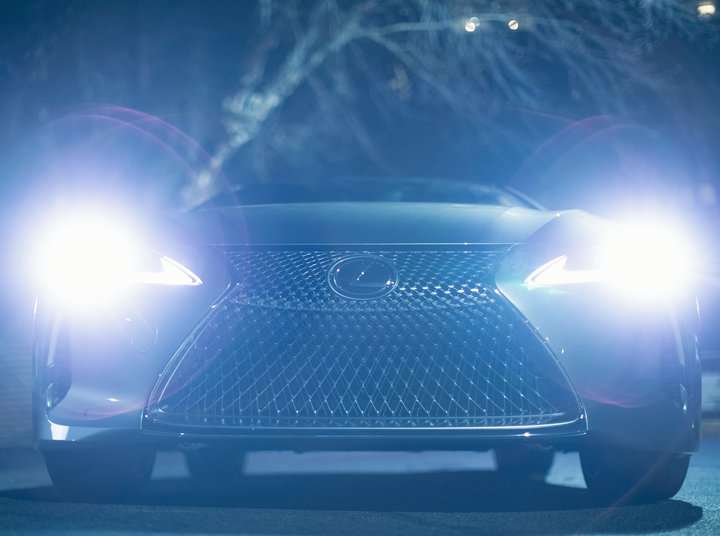
LED headlights are generally much brighter than halogen bulbs.
Most average halogen bulbs will output around 1,000 lumens, while an LED headlight will be about 3,000 lumens.
This means that LED headlights give you much better visibility in the dark, making them a safer choice.
LEDs are capable of much brighter light than 3,000 lumens, but you need to make sure that they aren’t too bright. Otherwise, you’ll dazzle any oncoming drivers.
There isn’t a common law in place that dictates a maximum luminosity of a headlight. Still, there are limits on the candela rating, which is the measurement of light in a 3D space.
According to Federal Motor Vehicle Safety Standard No. 108 the candela should be between 20,000 and 75,000.
To calculate the lumens from this, you’d need to know the exact apex angle of your headlights. Generally, you’ll be OK if your headlight bulb is rated between 2,000 and 4,000 lumens.
Some LED headlight bulbs may be sold with the label “for off-road use only” which means they are likely either the wrong color (blue headlights aren’t permitted) or they’re too bright to be used on roads.
Make sure you don’t use these bulbs for your headlights, or you could get pulled over and given a citation.
Also be careful when using LED bulbs for any DRL lights too, as again they could be too bright, especially if left on at night.
Are LED Bulbs Compatible With Halogen Housing?
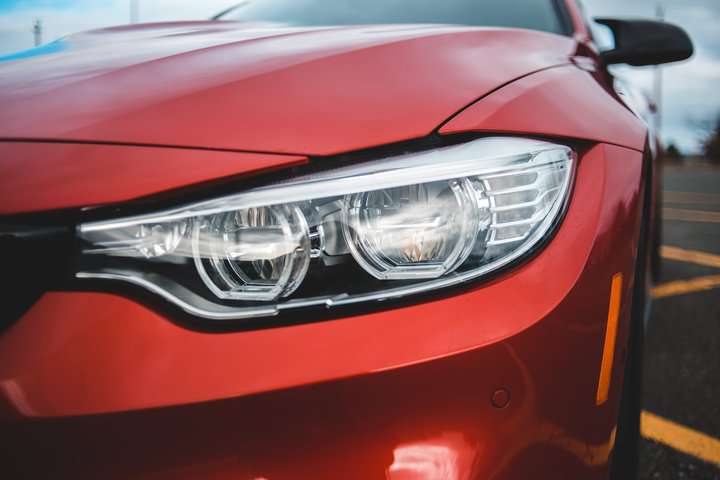
In most cases, LED headlight bulbs are compatible with existing halogen housing. However, you should always research compatibility for your specific car make and model before buying new bulbs.
However, even when compatible, it’s not usually as simple as swapping out the bulb for an LED one.
If you’re using a reflector headlight, you also need to replace that with one designed for LED bulbs.
That’s because the directional way that LEDs produce light is different from the general halogen bulb lighting. So you’ll likely end up with some weaker coverage in places, along with a blindingly intense white beam in others.
You may think that it’s not a problem – you’ll see better, right?
Well, maybe, but other drivers won’t, and the police may want a word with you for causing a hazard.
Secondly, depending on the make and model of your car, you may also need to install a conversion kit or re-wire your headlights.
LED bulbs run on a much lower voltage than halogen bulbs, so you may need a driver as an intermediary to step down the voltage.
You might also need to re-wire the circuitry so that your car isn’t fooled into thinking there’s a fault with the bulb since it’s drawing so little power.
There are alternatives though – some bulbs like the one from Lasfit are a lot cleverer and have the driver installed already.
Final Words
LED headlights are clearly the better choice over halogen headlights.
Sure, halogens are cheaper, but you’ll need to replace them so much more frequently that the LEDs will likely cost the same or even save you money over their lifetime.
And yes, halogen bulbs will stay free of snow in heavy storms, but that’s a very niche benefit.
The longevity of LED bulbs makes them the clear choice if you’re able – yes, they’re more expensive up front, but over their lifespan, you’ll likely save money and effort since you’ll need to replace them significantly fewer times – they’ll last for many, many years.
Do you already have LED headlights, or have you considered making the change?
What’s stopping you if you have thought about it?
Claim your 10% discount on the first order with Lasfit

- Replace your dim halogen headlights with bright LED
- LED lighting increases your visibility on the road during the day, and for you in the night
- Select LED lighting that is exactly designed for your car
- Buy with confidence having 45 days money back guarantee
Claim 10% off on your first order over $50, using the promo-code “FIRSTTIME10“!

